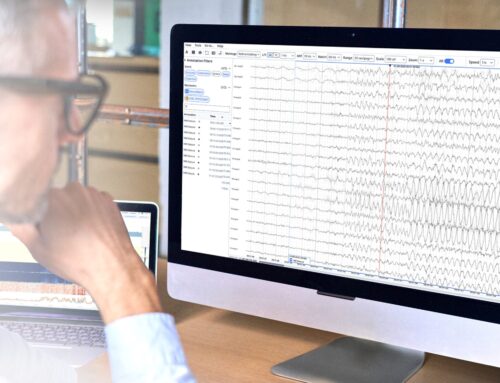By Chris Hutchinson, Director of Clinical Affairs at Fisher & Paykel Healthcare
A little over a year ago, shortly after the Covid-19 outbreak was declared a pandemic, the frightening news around a possible mechanical ventilator shortage in U.S. hospitals sent a shiver through the nation. Since then, hospitals have adjusted their surge planning strategies to include the evidence supported outcomes of Nasal High Flow (NHF) therapy as a front-line treatment for respiratory compromise patients.
During the height of the pandemic and even today as COVID-19 hospitalizations decrease in the U.S., NHF therapy has frequently become the treatment of choice for emergency departments as it reduces potential patient escalation to tracheal intubation. While the procurement of ventilators over the past year has solved some initial problems for healthcare organizations, these complicated and expensive breathing machines have created others for healthcare professional. For instance, The New York Times found that while many healthcare institutions now have the requisite number of ventilators, the number of qualified respiratory therapists and medical personnel to operate these intricate machines is falling short. Likewise, the Washington Post found that some of the breathing machines ordered by the Pentagon last spring 2020 were not up to par and couldn’t be disseminated to ICUs that are badly in need of equipment.
These issues have been a wake-up call for pulmonologists and respiratory therapists: despite the extensive procurement of ventilators since March 2020, the need to find alternative ways to treat respiratory distress in Covid-19 patients is still essential. NHF therapy was first used on hypoxemic Covid-19 patients back in the spring of 2020 and today it has become the standard therapy in many emergency departments across the nation.
Nasal High Flow Therapy Reduces ICU Stays and the Need for Classic Ventilation
As it has been well documented, some Covid-19 sufferers are asymptomatic while others can become extremely sick requiring hospitalization for respiratory distress. According to the CDC, the number of Covid-19 patients requiring hospitalizations was at its highest in December 2020 — numbering 343.4 hospitalizations per 100,000.
Despite its life-saving virtues, ventilation is often used as a last resort due to its invasive nature. Patients on ventilation must be anesthetized and that can be dangerous for those who become weakened by the coronavirus. Covid-19 also often causes patients to develop thick, tenacious secretions which can be difficult to clear in the intubated patient and lead to complications. That is where NHF therapy on the front lines in the Emergency Room, especially at higher flows between 45 and 60L/minute, has been employed to stabilized Covid-19 patients that otherwise would have escalated to critical levels and helped them avoid ICU admissions in favor of treatment on the step down or intermediate hospital floors.
NHF therapy was adopted early in the pandemic as frontline therapy by a several major institutions for their hypoxemic coronavirus patients – in hopes that the therapy could de-escalate the patient and obviate the need for ventilation. UnityPoint Health in Des Moines, Iowa documented that using NHF Therapy early in the treatment cycle kept 73% of their Covid-19 patients off invasive ventilation. In addition, this same organization also found that NHF therapy shortened the patient’s ICU stay by nearly a week.
In many cases, ventilated patients must stay in the ICU for a week or more, but patients receiving NHF therapy averaged a three-day stay in the ICU.
Overall, mortality rates declined significantly when NHF therapy was used and ventilation was limited, according to Temple University.
Nasal High Flow Therapy Means Patient Compliance
NHF therapy is a noninvasive approach that allows oxygen to be delivered comfortably at flows up to 60 liters per minute at a prescribed fraction of inspired oxygen (FIO2) levels. This is accomplished by heating and humidifying the breathing gas to body temperature at near 100% relative humidity and delivering via a nasal cannula system or tracheostomy interface.
The NHF therapy devices include a nasal interface that sits lightly in the nostrils, leaving the mouth unobstructed, allowing the patient to eat, drink, speak and take medication. While ventilators require anesthetization, NHF therapy allows for the patient to be fully awake and even mobile. This means patients are more comfortable and able to discuss their care with clinicians leading to more compliance with medical orders and as a result, healthcare workers reported these patients tended to recover much more quickly.
In addition to shorter stays in the ICU, NHF therapy also offers improvements to overall hospital bed flow.
Nasal High Flow Therapy Safety for Patients and Frontline Healthcare Workers
NHF Therapy is still a relatively new procedure that is becoming more prevalent due to its success in the management of Covid-19 patients. A year ago, as many medical purchasing teams attempted to stock up on respiratory equipment to prepare for the surge of coronavirus cases, a major concern among health pros was whether or not these devices could prevent the aerosolization of Covid-19 particles, given the highly contagious nature of coronavirus.
Three major studies, published in just the past two years, have addressed many of these fears, concluding that the aerosolization rates of the NHF Therapy nasal cannulas were in fact no different from that of current oxygen modalities and significantly less than traditional non-invasive mask ventilation. For instance, Leung et al. 2019 found that Nasal High Flow at 60 L/min when compared with an oxygen mask presented no significant difference in bacterial counts reported in the air sample.
Surge Planning Commences Despite Vaccine Dissemination:
Covid-19 cases continue to surge and in many places in the nation, these acute coronavirus patients are overwhelming the ICUs. While there are now several Covid-19 vaccines being distributed to millions, healthcare professionals must remain diligent when it comes to ensuring their emergency departments have the proper amount of respiratory equipment to treat hypoxemic Covid-19 patients. Many have turned to NHF therapy to lessen a patient’s need for classic ventilation, shorten ICU visits and ultimately, increase survival rates among patients presenting in respiratory distress.
 About the Author
About the Author
Chris Hutchinson is the Director of Clinical Affairs for Fisher & Paykel Healthcare in Irvine, California. His 30+ year career with Fisher & Paykel Healthcare began in Auckland, New Zealand with clinical research and product development, and progressed onto clinical education, user training, sales & marketing in various F&P locations worldwide. His primary research interests include noninvasive respiratory support and nasal high flow. He is a Member of AARC, Corporate Affiliate Member of ATS and Southern California Chapter member of SCCM. Chris has lectured at region, state and national meetings for respiratory care, nursing and physician groups. He has a Bachelor of Engineering, a Post-Graduate Diploma in Business and five medical device patents awarded by the USPTO.












